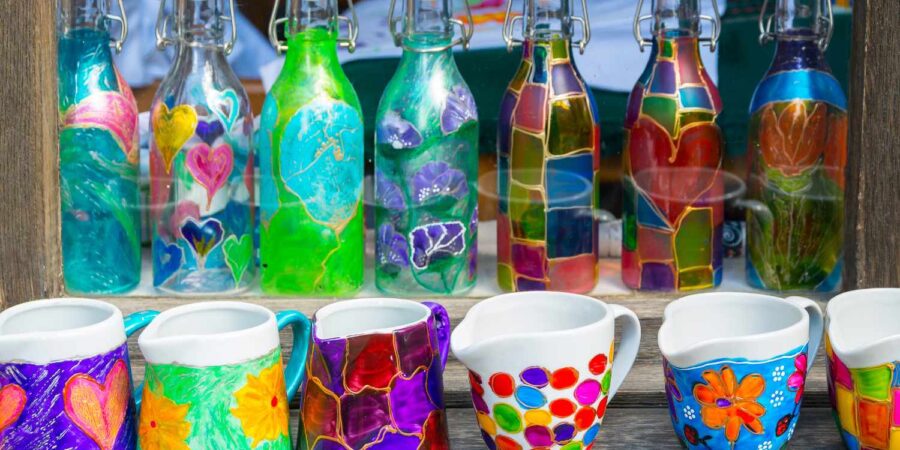Did you know glass is a flexible material that lends itself to stunning, imaginative sculptures and decorative artworks? Studio glass, as this creative enterprise is known, is a recognized aspect of the international art scene.
The use of glass for both functional and artistic purposes goes back to the ancient civilizations of Egypt and Assyria. Glass-blowing was first developed by the Phoenicians and also widely practised in the Roman Empire. The best known surviving examples of glass art are the superb stained glass windows of Europe’s great cathedrals.
Murano, Italy is held to be the centre of glass art in the modern age. European ateliers that are virtually synonymous with glass art are Lalique, Gallé and Daum. Tiffany and New York’s Corning schools were the pioneers of glass art across the Atlantic. Harvey Littleton’s work in the USA made it possible for artists to work individually in small furnaces rather than large, industrial ones, hence the name, studio glass.
Studio glass art techniques
There are several approaches to creating glass artworks:
Glass-blowing: A traditional method, where artists work near a furnace filled with molten glass. Using hand tools and metal rods, they can fashion an infinite variety of shapes, typically improvising as they go along. Blown glass enables artists to create extremely large, hollow sculptures.
Flame-worked glass: This requires the use of torches and a kiln and involves minimal space and investment. Using hand tools to shape metal rods and glass tubes, the artist creates relatively small, but extraordinarily realistic and detailed artworks. American master Paul Stankard’s floral paperweights are fine examples of flame-worked glass.
Cast glass: Ideal for large sculptures. At a furnace or kiln, or using a torch, a mould is created from sand or plaster and silica. Depending on the desired effect, this is filled with clear, coloured or patterned glass.
Stained glass: The artist cuts coloured glass into the desired patterns. The pieces are fitted into lead cames or channels whose joints are soldered into place.
Etched glass: The artist creates an acid-resistant design on glass. This is dipped into an acid solution. Etching is also achieved by hand engraving and sandblasting.
Famous names in studio glass art:
Emile Gallé (1846-1904) of France was inspired by the Art Nouveau movement. His “Autumn Crocus” series consist of delicate, elongated vases inspired by these flowers.
Rene Jules Lalique (1860-1945) from France began his career as a jewellery maker but switched to glass-making. Art Deco inspired Lalique perfume bottles and tableware are popular collectibles, while Lalique fountains are Parisian landmarks.
With artists worldwide constantly pushing the envelope in terms of experimenting with new materials, forms and techniques, studio glass holds out great promise for art collectors.



Leave a Reply